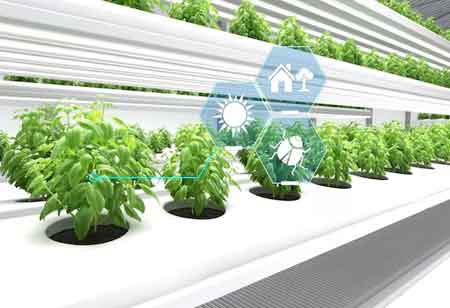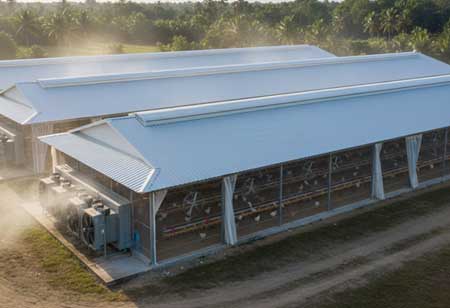Thank you for Subscribing to Agri Business Review Weekly Brief
Building Predictive Foundations for Agricultural Lending Ecosystems
The agricultural sector is evolving with advanced yield forecasting, enabling smarter lending practices, adaptable repayment structures, and customized insurance solutions, while strengthening collaboration between farmers and financial institutions.

By
Agri Business Review | Tuesday, September 16, 2025
Stay ahead of the industry with exclusive feature stories on the top companies, expert insights and the latest news delivered straight to your inbox. Subscribe today.
The agricultural sector, once perceived as low-tech and high-risk, is now positioning itself at the cutting edge of a technological revolution in financial services. At the heart of this transformation lies the integration of advanced yield forecasting into lending models, reshaping the very foundation of agricultural finance. Static, one-size-fits-all loans are being replaced by dynamic solutions rooted in predictive insights.
Yield forecasting has evolved from reliance on historical averages and localized expertise into a data-driven scientific discipline. By harnessing a convergence of diverse data streams, financial institutions can now deliver precise projections of crop performance. These forecasts extend beyond estimating harvest volumes—they provide a holistic view of a farm’s future economic viability, enabling more informed lending, risk management, and investment decisions.
The Technological Engine of Prediction
The modern yield forecasting engine is a complex and interconnected system. It begins with the acquisition of data from various sources. Satellite imagery offers a comprehensive, macro-level view of a field's health, tracking changes in vegetation indices, such as the Normalized Difference Vegetation Index (NDVI), over time. This provides a powerful, non-invasive method for monitoring crop growth across vast geographical areas.
Simultaneously, in-field sensors offer a micro-level perspective. These devices, placed directly in the soil or on plants, collect real-time data on critical variables such as soil moisture, temperature, and nutrient levels. When combined, the macro-level view from satellites and the micro-level data from sensors create a rich tapestry of information about a crop's health and potential.
Weather data constitutes another critical input. Advanced weather models, characterized by high spatial and temporal resolution, can predict rainfall, temperature fluctuations, and extreme weather events. These predictions are subsequently integrated into the forecasting model, enabling it to account for the impact of climatic conditions on crop development. Robust machine learning algorithms facilitate the integration of this disparate data. These algorithms are trained on extensive historical datasets, enabling them to identify intricate patterns and correlations between environmental factors and crop yields. This capability empowers them to render nuanced, predictive judgments that would be beyond human discernment.
The Lending Framework
A robust yield forecast empowers financial institutions to transcend traditional lending metrics and explore novel opportunities. Rather than relying solely on a farmer's credit history and collateral, lenders can now assess risk based on the projected cash flow from the impending harvest. This paradigm shift holds several profound implications for the development of flexible repayment schedules. Should a yield forecast indicate a slight delay in the harvest due to unforeseen weather patterns, the repayment schedule can be adjusted commensurately, affording the farmer much-needed latitude. This stands in stark contrast to conventional loans, which frequently impose rigid repayment terms that can exert immense pressure on farmers during arduous seasons.
Yield forecasting enables the adjustment of interest rates. Lenders can offer a lower interest rate to farmers with a strong yield forecast, as the perceived risk is lower. Conversely, if the forecast indicates potential for a lower-than-average yield, a slightly higher interest rate may be applied to mitigate the increased risk. This creates a powerful incentive for farmers to adopt best practices and invest in technologies that improve their yields, as these efforts are directly rewarded with more favorable financing terms. This data-driven approach facilitates the development of innovative insurance products. By accurately forecasting potential crop losses, insurers can create highly customized policies that are more affordable and better aligned with the specific risks faced by individual farmers. This moves away from broad, regional insurance policies to highly targeted, farm-specific coverage.
Transforming the Agricultural Finance Ecosystem
The incorporation of yield forecasting represents not merely an enhancement to existing systems but a fundamental re-engineering of the agricultural finance ecosystem. This integration cultivates a more collaborative and transparent relationship between financial institutions and agricultural producers. Lenders gain a more profound and precise understanding of a farmer's operations, thereby facilitating more informed decision-making. Concurrently, farmers benefit from an enhanced sense of partnership, afforded by financial instruments meticulously structured to foster their prosperity rather than merely extract economic value.
This paradigm shift also has a broader economic impact. By mitigating risk and providing more stable financing, it encourages greater investment in agricultural technology and sustainable farming practices. Farmers are more likely to adopt new seeds, precision agriculture tools, and other innovations when they have access to flexible and affordable credit. This, in turn, leads to increased productivity, enhanced food security, and a more resilient agricultural sector.
The trajectory of agricultural finance is indissolubly linked to the efficacy of predictive analytics. As technological advancements persist, the precision and sophistication of yield forecasting models will similarly evolve. The seamless integration of these models into established lending frameworks will consistently unveil novel opportunities, thereby fostering a more equitable, efficient, and financially stable environment for global food producers. The nexus between agricultural cultivation and financial mechanisms transcends a simplistic linear progression; it constitutes an intricate feedback loop wherein farm-derived data directly informs the financial instruments that underpin agrarian expansion.





